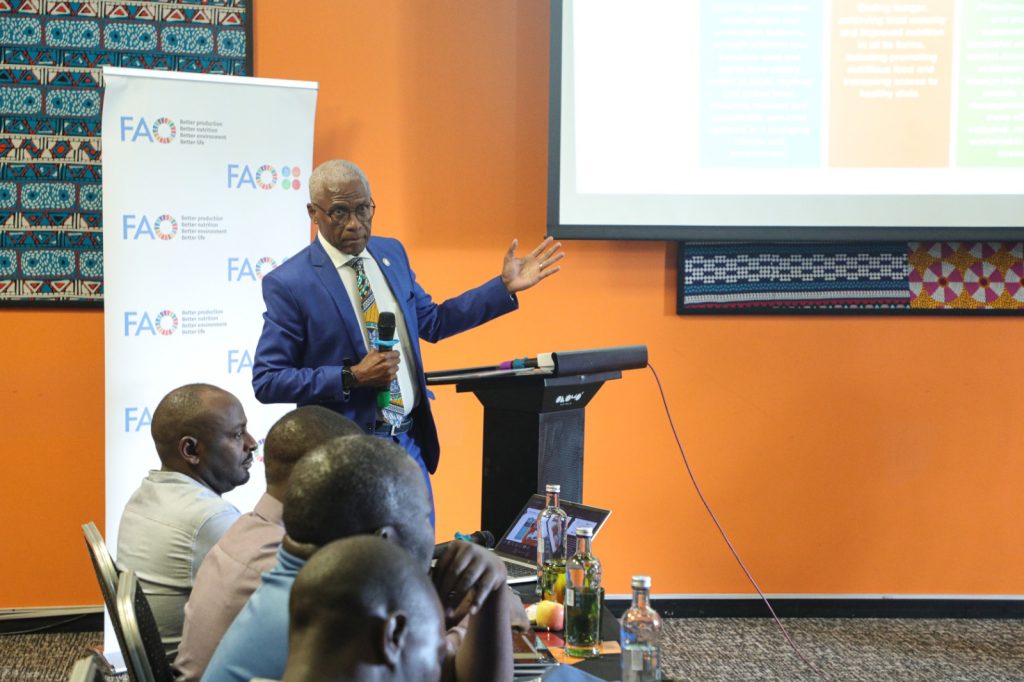Although commercial forestry is a profitable venture that can create employment for the youth in Uganda, the technologies being used for processing and harvesting timber products are outdated.
The challenge is likely to force those in this business to go for deforestation to make quick sales, hence affecting the already depleted forest cover in the country. According to the Ministry of Water and Environment, Uganda’s forest cover has dropped from 24% in 1990 to 11% to date.
The observation was made by Dr Antonio Querido, the food and Agriculture Organisation Country Representative to Uganda on the sidelines of the Water and Environment Week, where the Danish Embassy announced their financial contribution towards the forest conservation program in Uganda for the next four years.
He explained that for the last 20 years, with support from the European Union and other partners, his organisation has so far planted trees on between 150,000 and 200,000 hectares across the country with a focus on commercial timber production.
Querido, however, noted that despite the increase in the growth of commercial trees and forests, the technologies being used to harvest and process timber products are outdated.
“One challenge is that technologies used to process timber products are inefficient and are outdated. If you visit some of the facilities where time is being processed, you will find that technologies are often quite inefficient and unsafe for the youth in this business. due to their inefficiency, the rate of return on investment in processing units is only 40%,” Querido said.
Apart from destructive technologies, those operating the wood processing units lack the expertise to produce furniture that can compete with that imported from Sweden, Italy, China among others.
He added that for the quality of Timber products to increase, governments should invest in skilling young people in woodwork, noting that the demand for timber products among Ugandans in urban areas is on the rise. He added that Uganda’s urbanisation rate is growing at 6% annually.
According to him, when properly harnessed, commercial forestry is another economic opportunity for the Government, which, when nurtured and supported, could address the unemployment challenge among youth.
The Danish Ambassador to Uganda, Signe Winding Albjerg, highlighted her country’s commitment to supporting Uganda’s efforts to restore its forest cover. Speaking about Denmark’s collaboration with Team Europe on this initiative, she noted that Uganda’s forest cover has drastically decreased from 24% in 1990 to a mere 11% today. Denmark’s financial contribution to the program, spanning four years, is part of the 1 billion Danish Kroner allocated by the Danish government for global forest conservation efforts, which include regions like the Amazon, Central Africa, and now Uganda.
“Our support will specifically focus on enhancing programs that foster mobilisation, deployment, and efficient utilisation of forest financing through partnerships and collaborations,” Albjerg stated.
Alfred Okot Okidi, Permanent Secretary in the Ministry of Water and Environment, revealed that since the EU Forests Partnership was launched in 2022 between the European Union and the Ugandan government, the EU has contributed approximately €40 million (about Shs 163 billion) to the initiative.
He outlined that the Partnership for Forests in Uganda Program is dedicated to combating deforestation, promoting sustainable forest management, and restoring Uganda’s forest cover.
Okidi also shared that the ministry is actively running a campaign encouraging Ugandans to plant trees. An official tree-planting day is scheduled for October in Jinja District, as part of the nation-wide effort to bolster forest conservation.


